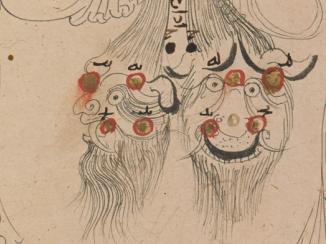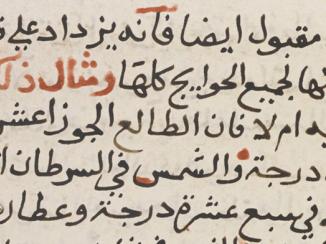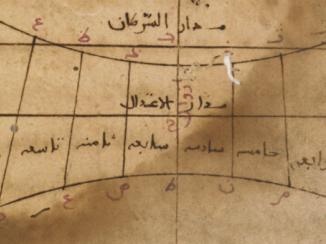Overview
Between c. 133 AH/AD 750–236 AH/AD 850 Abbasid Iraq entered into contact with both Indian and Hellenistic astronomy and faced the problem of choosing between them. An attempt to solve it was made during the caliphate of al-Ma’mūn (198/813–218/833) who patronised the first programme of astronomical observations. These continued until the fifth/eleventh century and reached their summit with al-Bīrūnī who systematised critically the knowledge acquired by his predecessors, added the results of his own research, and marked the end of the period of assimilation.
The Author: al-Bīrūnī
Abū al-Rayḥān Muḥammad ibn Aḥmad al-Bīrūnī (362/973–after 440/1048) was born in the environs (bīrūn) of Kāth (in Khwārizm), on the basin of the lower Amu Darya, south of the Aral Sea. He wrote in Arabic, although he used Persian occasionally, and learnt some Greek, Syriac, Hebrew and Sanskrit. He lived in Khwārizm, Rayy (near Teheran), Gīlān, and Gūrgān (south of the Caspian Sea). Between c. 408/1007 and c. 440/1048, the conqueror of Khwārizm, Maḥmūd al-Ghaznawī (388/998–421/1030), forced him to stay in Ghaznah (in Afghanistan).
In Khwārizm he was patronised by its ruling dinasty, the Banū ‘Irāq, until 385/995 and one of its members, the prince Abū Naṣr Manṣūr (died c. 408/1018), was his teacher. In Gūrgān he was protected by Qābūs ibn Washmaghīr (388/998–403/1012) to whom he dedicated his Chronology of Ancient Nations (al-Āthār al-bāqīyah ‘an al-qurūn al-khālīyah). In Ghaznah he was sponsored by Maḥmūd, whose military expeditions in northern India allowed him to travel through this country, learn Sanskrit and acquire direct contact with Indian astronomy. After Maḥmūd’s death, he maintained an excellent relationship with his son and heir Mas‘ūd (421/1030–432/1040) to whom he dedicated his al-Qānūn al-Mas‘ūdī.
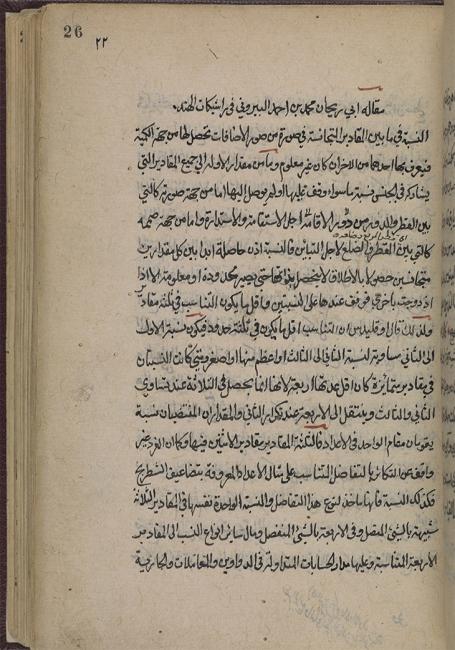
al-Bīrūnī was principally an astronomer and his observations are dated between 380/990 and 412/1021. However, he was also an applied mathematician and wrote works on history, mineralogy, pharmacology and philology. Throughout his life he maintained correspondence with the most brilliant minds of his time: the philosopher Ibn Sīnā (died 438/1037), the astronomers al-Khujandī, Abū l-Wafā’ al-Būzajānī (328/940–388/988), and his master Abū Naṣr.
An Astrological Handbook
The Kitāb al-tafhīm li-awā’il ṣināʽat al-tanjīm (Understanding the principles of the Art of Astrology) is an astronomical and astrological handbook in the form of questions and answers, written, unusually, at the request of a lady named Rayḥānah bint al-Ḥasan, probably one of the members of the Khwārizmian court forced to exile in Ghaznah after 408/1007. It has been preserved in two versions: Arabic and Persian. In spite of its title, the subject of astrology only occupies about a third of the book. The remaining two thirds are dedicated to geometry, arithmetic, algebra, and especially astronomy because, as al-Bīrūnī’s says, ʽno one is worthy of being called an astrologer who is not thoroughly conversant with these four sciences’ (li’anna al-insān lā yastaḥiqqu simat al-tanjīm illā bi-istīfā’ hādhihi al-funūn al-arba‘a). This book is an excellent introduction to medieval Islamic astronomy and astrology and is also an extremely useful source for definitions of technical terms.
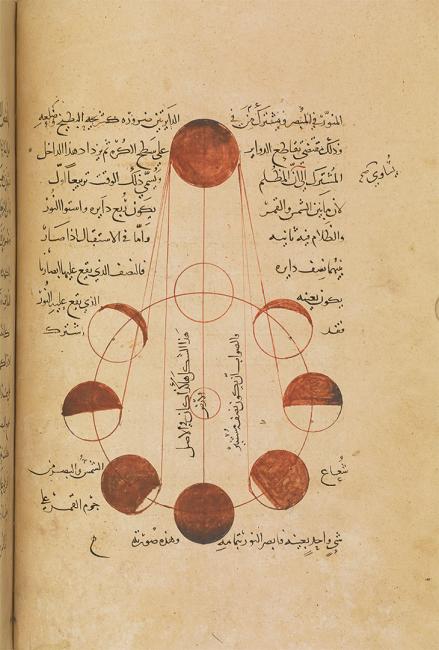
An Astronomical Masterpiece
al-Bīrūnī’s astronomical masterpiece, however, is his al-Qānūn al-Mas‘ūdī,. The term Qānūn, used in the title, is a clear reference to Ptolemy’s Handy Tables, called al-Qānūn in Arabic sources. al-Bīrūnī’s work is, therefore, a zīj (a set of astronomical tables) although its contents exceed those of a standard zīj and are rather an updated version of Ptolemy’s Almagest. The volume is divided into eleven treatises (maqālāt) dealing with cosmology, chronology, trigonometry (including the new theorems developed by al-Bīrūnī and his contemporaries), spherical astronomy, mathematical geography, motions of the sun and the moon, eclipses, crescent visibility, fixed stars, planets and mathematical astrology. The basic principles were Ptolemaic but the Qānūn included information related to the new cultures Islam had become acquainted with, and added many corrections as a result of the observations made by his predecessors and by al-Bīrūnī himself. As many of the sources used are now lost, the Qānūn is a mine of information for the history of Islamic astronomy up to the eleventh century.
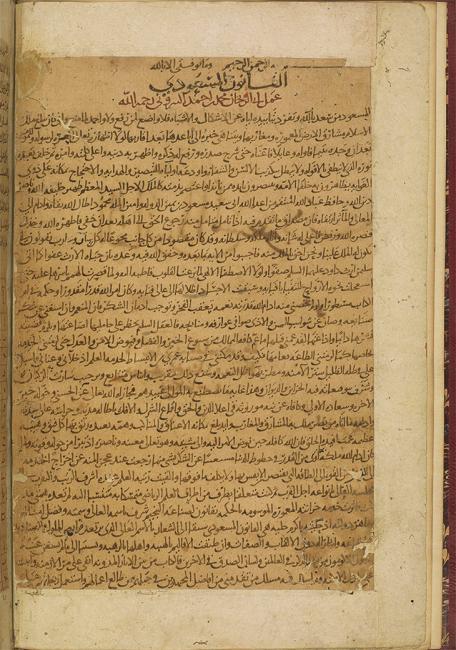
The Most Well-rounded Islamic Scientist
al-Bīrūnī was probably the most complete scientist in the history of Islamic civilisation. His whole life was centered in scientific research in spite of his itinerant lifestyle. His al-Qānūn al-Mas‘ūdī is the medieval equivalent of Ptolemy’s Almagest, which had been analysed and criticised in Islamic lands between the second/eighth and the fifth/eleventh centuries, and it represents the peak of this process. Unfortunately neither this nor the other works of al-Bīrūnī reached al-Andalus (Islamic Spain), so it was never translated into Latin and the brilliance of al-Bīrūnī remained unknown in Medieval Europe.

